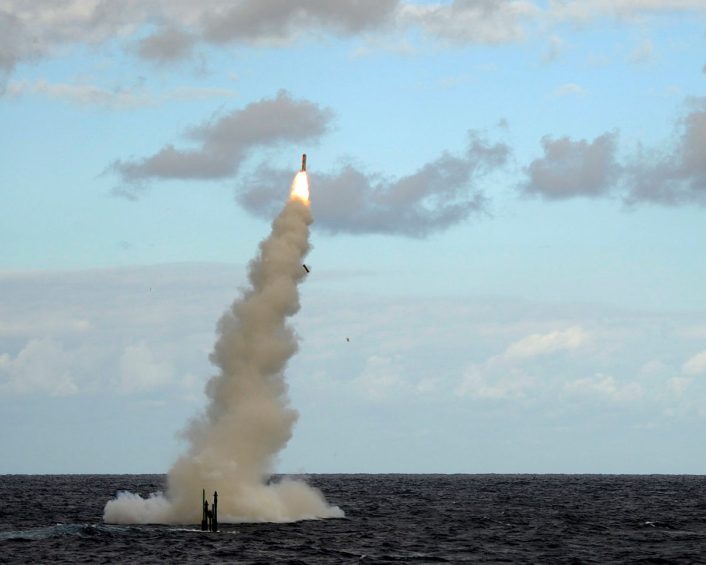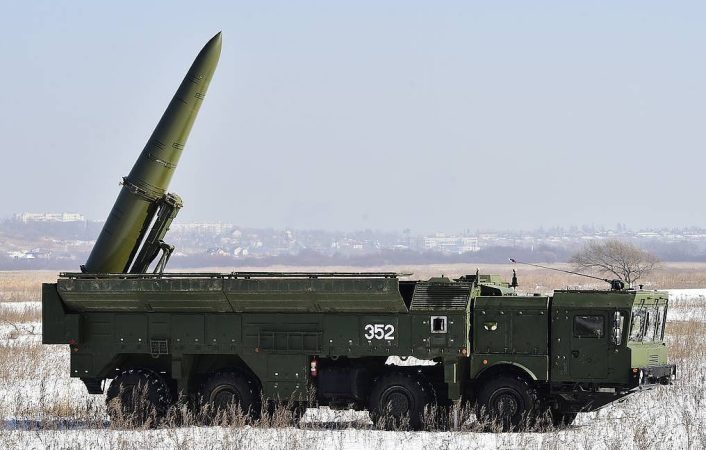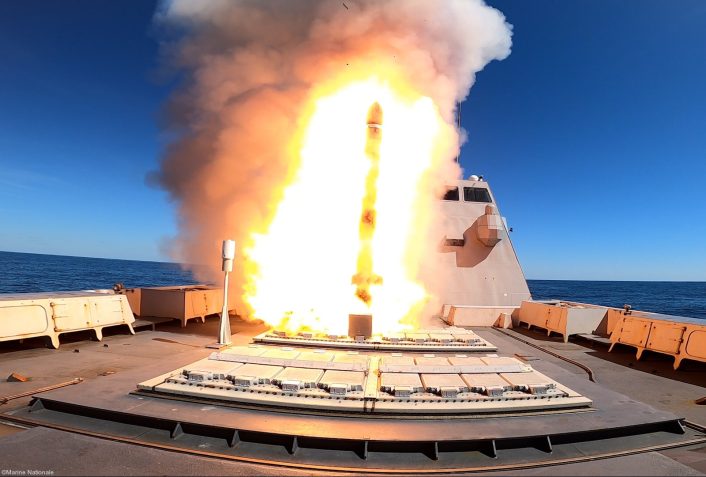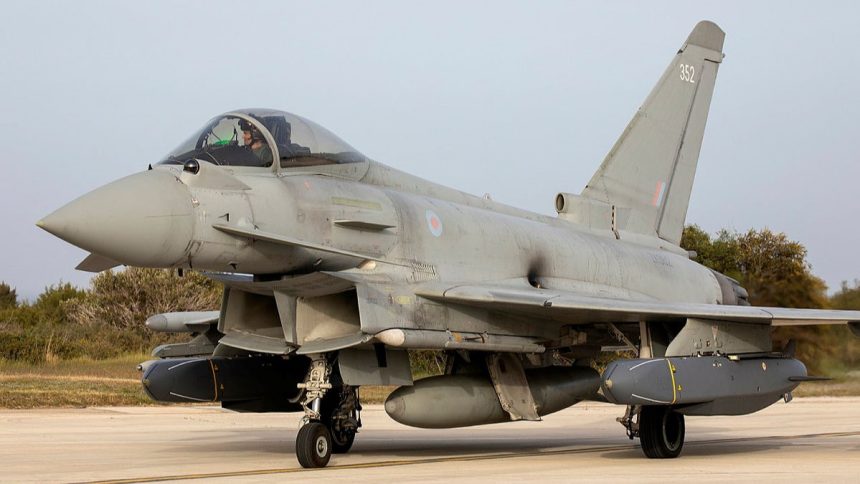UK and Germany announced their intention to jointly develop a “deep precision strike” missile with a range of 2,000 km (1,243 miles) as part of the Trinity House Agreement.
The announcement came as German Federal Minister of Defence, Boris Pistorius, hosted the UK’s Defence Secretary John Healey MP on May 15, 2025, in Berlin, for the first Trinity House Defence Ministerial Council. There they discussed the deep strike capability, alongside other Anglo-German procurement agreements that were born from the Trinity House Agreement.
Defence Secretary John Healey MP said:
“The UK and Germany have never been closer, and the Trinity House Agreement is already making a positive impact on our security and economy…
In a more dangerous world, NATO and European allies stand united. Together with Germany, we’re leading the way in supporting Ukraine, defending NATO’s eastern flank, and jointly investing in next-generation capabilities.”

A 2,000 km missile would be one of the most advanced weapons to be developed by the UK and Germany. Both nations have produced cruise missiles with ranges up to 500 km, with the British Storm Shadow designed by the Anglo-French portion of MBDA Missile Systems and the German Taurus KEPD 350 produced by the German subsidiary of MBDA in partnership with Saab Bofors Dynamics. The UK intends to replace Storm Shadow with the Future Cruise/Anti-Ship Weapon (FC/ASW) that is in development with France and Italy, which will also be produced through MBDA.
This short video shows a Tomahawk Land Attack Cruise Missile (TLAM) being fired by a Royal Navy attack submarine. However many we have, we should buy some more. pic.twitter.com/kOXlt5t5It
— Think Defence (@thinkdefence) February 19, 2025
The UK has experience operating cruise and ballistic missiles with ranges exceeding 1,000 km, with the Royal Navy currently operating the Block V variant of the BGM-109 Tomahawk Land Attack Cruise Missile (TLAM) and the Trident II ballistic missile. TLAM is launched from the torpedo tubes of the Astute Class Submarine and can hit targets up to 1,609 (1,000 miles) away. Trident II, as a ballistic missile, has a range of 11,265 km (7,000 miles) but it is not intended for conventional strike, and is used by the Royal Navy for the UK’s nuclear deterrent. Both missiles are of American origin and so the production of a 2,000 km missile will be a new challenge for Britain’s defense industry.

Details on the missile are currently lacking, with the announcement representing only their intent to produce a missile of this type. As a result, it is unknown if the missile will be a cruise or ballistic missile, nor whether it will be air, ground or sea launched, however there could be interest in all three. It is also unknown whether the missile will utilize low observable features as is present on the Storm Shadow, or whether it will rely on hypersonic speeds to enable its survivability in combat.
Will be interesting to see how this 2,000km missile pans out, will be be air launched or surface, will it be Mk41 VLS compatible, will it go on an F-35B, will it be submarine launched, and perhaps more importantly, what will it be calledhttps://t.co/vENG89rhMA
— Think Defence (@thinkdefence) May 16, 2025
The Trinity House talks also contained discussion on a joint procurement program of Sting Ray torpedoes to equip German and British P-8 Poseidon maritime patrol aircraft, enhancing collective defense in the maritime domain, whilst also boosting the British defense industry. Additionally, they discussed a procurement for the German Army of the new Dry Support Bridge produced by KNDS UK (Krauss-Maffei Wegmann and Nexter) which is currently in service with the British Army.
European Long-Range Strike Approach (ELSA)
It is of note that the hypothetical 2,000 km missile could be a contender for the ELSA program, an inter-European program intending to produce a conventional deep strike precision munition with a range between 1,000 km and 2,000 km and an in service date within the 2030s. Based on the range requirements of the missile, and a statement from Swedish Minister of Defence, Pål Jonson, the missile is likely to be ground based.
So it seems that the joint 🇬🇧UK-🇩🇪German plan to build a medium range ballistic missile (MRBM) announced today by @Reuters is part of the broader 🇵🇱🇫🇷🇮🇹🇬🇧🇩🇪ELSA initiative and that there’ll be more announcement soon.
Considering this new element: I am happy with this project ! https://t.co/Acu38GYsq1
— Etienne Marcuz (@Etienne_Marcuz) May 15, 2025
Initially launched in July 2024 by France, Germany, Italy and Poland, the program intends to improve ”‘the defense of Europe and to strengthen the European defense industrial and technological base” and to contribute to “strengthening the European pillar of the Alliance (NATO), for better sharing of the burden between Allies”. The project was later joined by the UK and Sweden in October of the same year. The main objective behind the project is to up-arm European NATO in the realm of long-range precision munitions in the face of increased Russian military aggression, using lessons learned from the Russo-Ukrainian war.

The war has demonstrated to European capitals that there is a need for ground-based long-range precision fires as a result of both sides’ inability to take decisive control of the air domain. Because of this, projectiles must be launched from longer ranges to be survivable against each other’s extensive Surface to Air Missile (SAM) networks.
The Russian Federation is utilizing the 500 km range 9K720 Iskander-M, whilst the Ukrainian Armed Forces are using the 300 km range MGM-140 Army Tactical Missile System (ATACMS) as their primary long range missile. However, the arsenal from both sides is extensive with domestically produced long-range cruise and ballistic missiles being used alongside them.
Footage of ATACMS launches in Ukraine towards Russian positions, shared by the Commander-in-Chief of the Armed Forces of Ukraine Zaluzhnyi. pic.twitter.com/uvx6QsF7Qf
— NOELREPORTS 🇪🇺 🇺🇦 (@NOELreports) October 17, 2023
With the exception of Turkey, no European nation produces its own conventional ballistic missile with the majority of research and development having focused on lighter cruise missiles that can be deployed abroad via aircraft and warships. Turkey has over the years produced a number of ballistic missiles, including the J-600T Yıldırım, and the BORA, both derivatives of the Chinese B-611 short range ballistic missile (SRBM). They also produced two entirely domestic conventional ballistic missiles, the Tayfun and the Cenk.
Poland, meanwhile, has started domestic production of a licensed produced variant of the South Korean CTM-290 tactical ballistic missile (Chunmoo Tactical Missile) with a range of 290 km, launched from the K239 Chunmoo Multiple Launch Rocket Launch System (MLRS). For the rest of Europe ATACMS has been the preferred choice, but ELSA seeks to provide European states with a domestic option, ending the reliance on the US and South Korea for this aspect of defense.
South Korea and Poland signed a $1.6 billion contract for 72 additional K239 Chunmoo (Homar-K) MLRS and associated missiles on 25 April 2024.
This follow-on contract includes 72 Chunmoo launchers, CGR-80 guided rockets (80km range), and CTM-290 missiles (290km range). pic.twitter.com/lYELxSjp4b
— Korea Defense Blog (@Korea_Defense) April 27, 2024
During previous years, long range precision strike has been a mission set nominally dominated by airpower, with NATO air forces providing the vast majority of ordnance expended during operations over Libya and Yugoslavia. The decision to enhance ground-based precision capability demonstrates Europe’s recognition that airpower can no longer be solely relied on for these types of missions, as peer adversaries with extensive missile defense systems remove the near impunity NATO has experienced in the past.
As a result, ELSA represents a solution that would provide NATO with the ability to threaten the logistics centers of its adversaries at greater ranges, without risking valuable aircraft needed for more specialized mission sets.

MBDA has so far been identified as the likely prime contractor, with multiple offerings that fulfil the design parameters of ELSA. They have suggested a version of the sea-launched Missile de Croisière Naval/Naval Cruise Missile (MdCN-NCM) which could be fitted to a Sylver A70 vertical launch system (VLS) and adapted to be transported and fired from land. The MdCN-MCN has a range estimated to be over 1000 km and so fulfils the ELSA requirement and is a likely contender for the system.
A thread on France’s own Tomahawk cruise missile, Storm Shadow’s big brother: the Missile de Croisère Naval (MdCN). 1/21🧵 pic.twitter.com/VDEpdleGP0
— VLS Enjoyer (@VLS_Appreciator) June 21, 2024
The Anglo-German missile announcement highlights British and German commitment to producing a weapon that fulfils the outer limits of ELSA and so it could become a contender for the program. Only time will tell as to where the Anglo-German missile will go and whether the rest of the ELSA participants are interested in the weapon system. For now details remain speculative.









